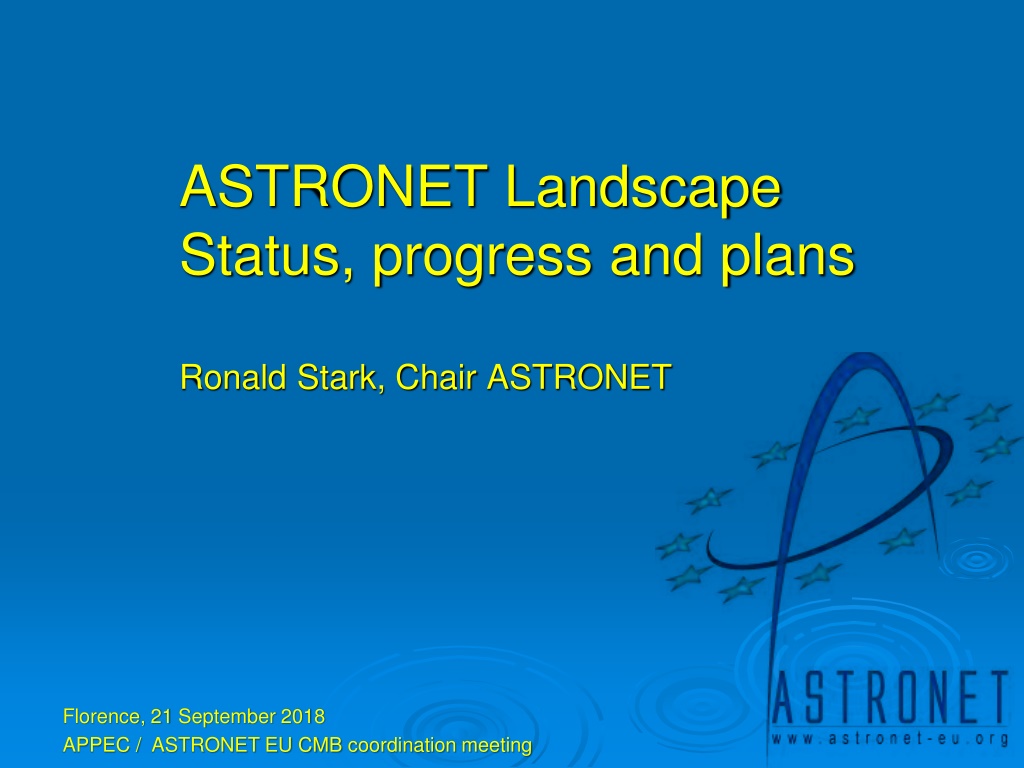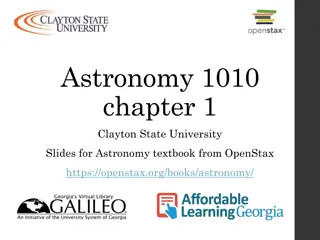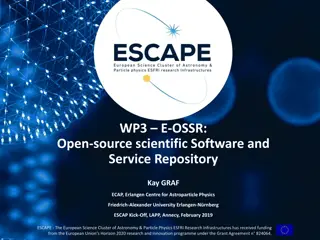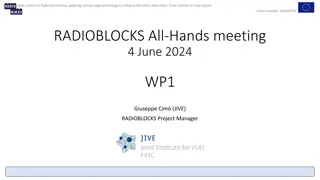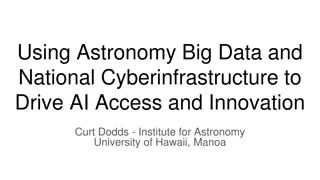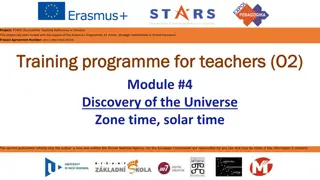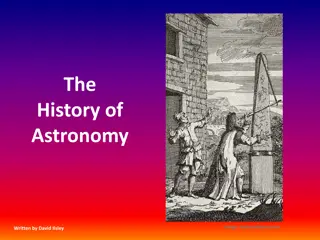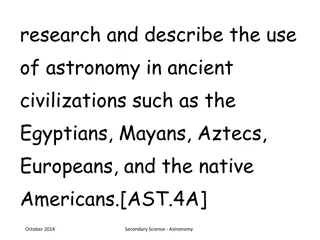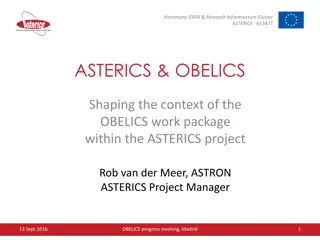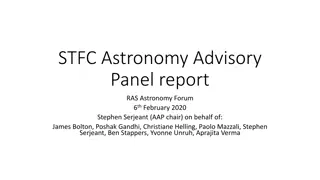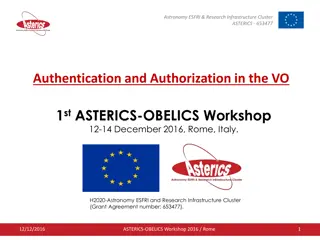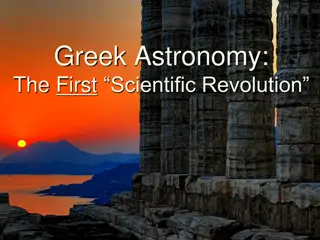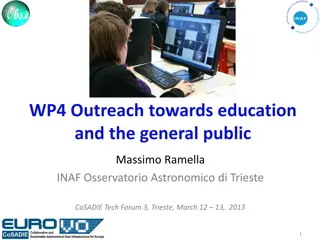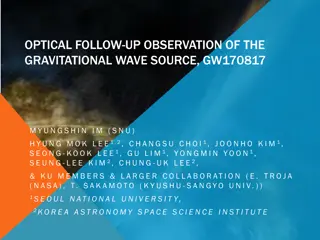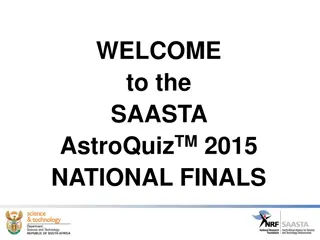ASTRONET: Advancing European Astronomy Coordination
ASTRONET is a consortium focusing on strategic planning for European astronomy, aiding decision-making for long-term benefits. Key achievements include the Science Vision and Infrastructure Roadmap. Efforts are ongoing to support a sustainable Virtual Observatory and enhance coordination within Europe. Current plans involve management activities, new communication channels, and collaborations for the future of European astronomy.
Download Presentation

Please find below an Image/Link to download the presentation.
The content on the website is provided AS IS for your information and personal use only. It may not be sold, licensed, or shared on other websites without obtaining consent from the author. Download presentation by click this link. If you encounter any issues during the download, it is possible that the publisher has removed the file from their server.
E N D
Presentation Transcript
ASTRONET Landscape Status, progress and plans Ronald Stark, Chair ASTRONET Florence, 21 September 2018 APPEC / ASTRONET EU CMB coordination meeting
ASTRONET A consortium of funding agencies for European astronomy focusing on strategic planning and coordination Aim To develop the overall context that can assist national funding agencies and European organisations in taking science-based, rational, and coordinated decisions for the long-term benefit and cost-effectiveness of European astronomy.
Key achievement Science Vision and Infrastructure Roadmap 2007 2008 Feb 2013 Jul 2014
Supporting efforts Preparing for a sustainable Virtual Observatory in Europe ETFLA: European Task Force Laboratory Astrophysics Astrophysical Software Laboratory Working Group ERTRC: European Radio Telescope Review Committee European Optical/IR Telescopes ASTERICS H2020, cluster of infrastructures Education and public outreach report
ASTRONET today FP7-ASTRONET ended on June 30th, 2015 Signature of LoI in June 2015 in the direction of a MoU preparation Signature of the MoU in October 2016 New Board in April 2017 (BE, ESO, FR, HU, IT, NL, SE, UK) + observer/invitee: APPEC, EAS, ESA + intention to join: CZ, DE, DK, ES, GR, PT, UA Astronomy Coordination within Europe via: ASTRONET
Current plans Management activities Complete the accession process New communication channels Implementing the recommendations of the roadmap CMB coordination in Europe (joint activity with APPEC) Monitoring the European Medium and Large Size O/IR Ground facilities (J. Gallego and ESO) Support the European Forum of Astronomical Communities (J. Palous) . ASTERICS Policy Forum Towards a new Science Vision and Infrastructure Roadmap
Towards a new Science Vision and Infrastructure Roadmap for European Astronomy
Developing the Science Vision - Made maximum use of available documents (e.g. national strategic plans, ESA s Cosmic Vision, ESO-ESAreports, scientific cases for new facilities) - Broad cross-section of science community About 50 people in Working Group and 4 Panels 9 Working Group and 31 Panel meetings Wider community input via web-based discussion forum and symposium.
Science Vision Key Questions Panels A: Do we understand the extremes of the Universe? (John Peacock) B: How do galaxies form and evolve? (Jacqueline Bergeron) C: What is the origin and evolution of stars and planetary systems? (Leonardo Testi) D: How do we (and the solar System) fit in? (Oskar van der L he)
Infrastructure Roadmap Aplan for the development of the infrastructures to enable European Astronomy to deliver the Science Vision Took the Science Vision as the point of departure Covered both ground & space-based facilities, including VO, HPC, theory, HR issues, outreach, education and training, industrial links Incorporated existing ESO, ESAplans as far as possible, and a global perspective Tried to fit within reasonable budgetary envelopes
Roadmap Panels (Chairs) High energy astrophysics, astroparticle astrophysics, gravitational waves [Guenther Hasinger, Patrizia Caraveo] UVOIR and radio/mm astronomy [Michael Grewing, Laurent Vigroux] Solar telescopes, solar system missions, laboratory studies [Mats Carlsson, Therese Encrenaz) Theory, computing facilities and networks, virtual observatory [Francoise Combes, Paolo Padovani] Education, recruitment and training, public outreach [Rosa Maria Ros, Bob Fosbury]
Implementation and Realisation ASTRONET initiates, pushes and enables focusing on efforts underlying the big facilities
Challenges ahead ! Having a common strategy for astronomy shared by all European countries is a major asset for Europe. Was key for e.g., E-ELT Future developments reinforce the need for coordination: ESA cosmic vision, ESO long term plan, ESFRI update Growth of multi-wavelength / multi-messenger astronomy Transdisciplinary approaches (biology, particle physics, chemistry, ) Big Data challenges
Next Steps Possibly to include survey of how relevant/helpful the current versions have been Possibly look at ways to involve more of the community / younger researchers Possibly look at alternative routes to data collection more workshops Obtain buy in from agencies and research organisations how do we ensure wider ownership Agree with Astronet on resources and coordinator Commence late 2018/early 2019 Complete spring 2021
Coordination EU-CMB Firenze 2015 2017: Sei personaggi in cerca d'autore? (Luigi Pirandello) EU: many paths (groundbased, stratosphere, space): S&T, buy-in US: coherent long term groundbased staged approach CMB Cosmology broad interest astronomy & physics 2018: toward a strong plan funding We have to hang together: leadership on stratospheric FIR experiments, low-freq arrays, MKID technology, etc. Science Vision EC H2020 applications, e.g.,: synergy grants, etc., SPACEKIDs follow-up? Coopetition with US, Japan, etc. (e.g., EU SO:ETA; LiteBIRD) New space plans: e.g., PRISTINE Draft White Paper EU 6m Tel@SP + FPU, EU-SO? Putting CMB in the bigger context e.g., ALMA, ESO, SKA-pathfinders and in future (e.g, EUCLID, SKA) Frapper, frapper toujours
